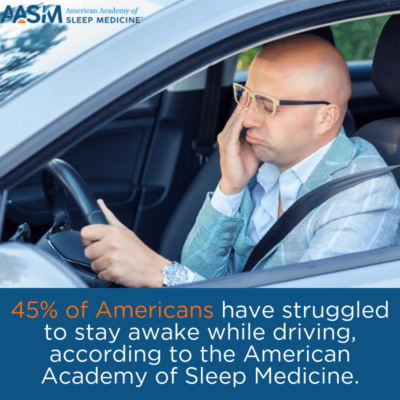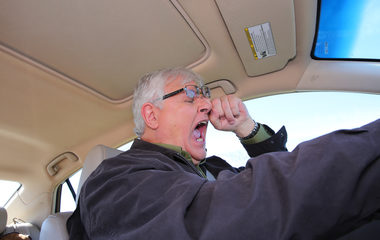DARIEN, IL – Have you ever found yourself falling asleep behind the wheel? Unfortunately, you are not alone. A new survey from the American Academy of Sleep Medicine found that 45% of adults have struggled to stay awake while driving.
Drowsy driving is a serious public health concern. Each year in the U.S., drowsy driving causes an average of 328,000 motor vehicle accidents, including 6,400 fatal crashes, according to the AAA Foundation for Traffic Safety.
“Driving while drowsy is similar to drunk driving with regards to the delays in reaction time and impairment in decision-making,” said AASM President Dr. Kelly A. Carden. “Drowsy driving can be deadly, yet it is 100 percent preventable.”
The September 2019 survey of 2,003 U.S. adults asked participants if they have ever struggled to stay awake while driving a vehicle. Only 48% of respondents indicated that they have never driven drowsy. Another 7% reported that they don’t drive.

To combat and prevent drowsy driving, the AASM recommends that drivers:
- Ensure that you get enough sleep before driving so that you can stay alert behind the wheel.
- Avoid driving late at night or while alone, if possible, and share the driving with a passenger on long trips.
- Use caffeine for a short-term boost in alertness.
- Pull over at a rest stop and take a nap if you begin to feel drowsy.
“Caffeine can provide a short-term boost, but if you’re having trouble keeping your eyes open, then it’s definitely time to pull over,” said Carden. “Turning up the music or rolling down the windows will not keep you alert while driving. The best option is to get off the road and take a nap if you feel sleepy behind the wheel.”
National Drowsy Driving Prevention Week is Nov. 3-10. Be aware of these warning signs of drowsy driving:
- Frequent yawning or inability to keep your eyes open
- Catching yourself “nodding off” or having trouble keeping your head up
- Inability to remember driving the last few miles
- Missing road signs or driving past your turn
- Following too close to cars in front of you
- Drifting into the other lane of traffic
- Driving onto the “rumble strip” or the shoulder of the road
“There is no substitute for healthy sleep,” said Carden. “Regular, healthy sleep is essential for staying awake at the wheel and protecting yourself and others from avoidable, potentially life-threatening accidents on the road.”
To learn more about ways to stay awake at the wheel, visit SleepEducation.org.
###
To request a copy of the AASM Sleep Prioritization Survey drowsy driving results, or to arrange an interview with an AASM spokesperson, please contact the AASM at 630-737-9700 or media@aasm.org.
About the American Academy of Sleep Medicine
Established in 1975, the American Academy of Sleep Medicine improves sleep health and promotes high quality, patient-centered care through advocacy, education, strategic research, and practice standards. The AASM has a combined membership of 10,000 accredited member sleep centers and individual members, including physicians, scientists and other health care professionals.





